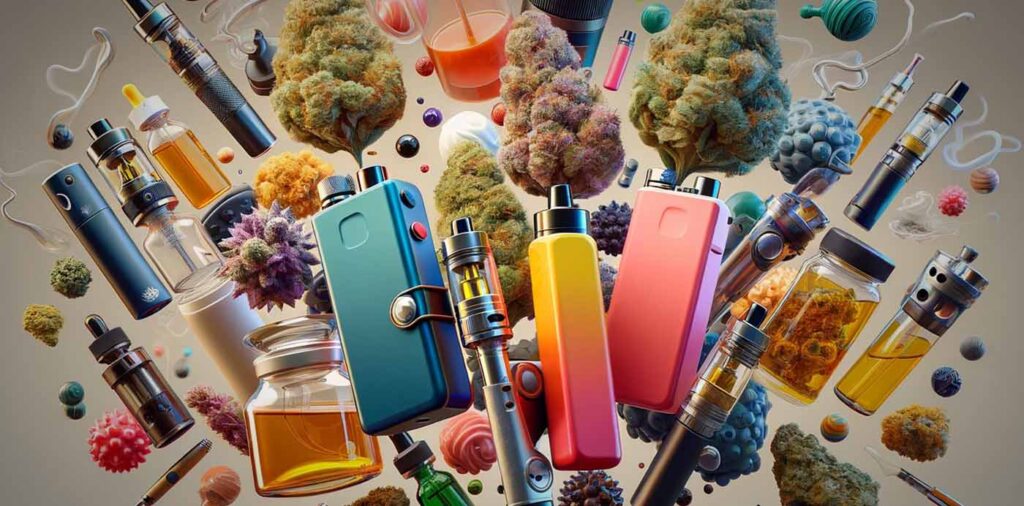In recent years, the cannabis industry has seen a significant shift toward environmental sustainability. As the industry grows, so does the need for cultivation practices that are not only efficient but also eco-friendly. This blog explores the innovative and sustainable methods being implemented in cannabis cultivation, highlighting the industry’s commitment to environmental stewardship.

The Environmental Impact of Cannabis Cultivation:
As the cannabis industry continues to evolve, so does our understanding of its environmental impact. Traditional indoor cultivation methods, while effective, often lead to higher water and energy usage. Recognizing this, the industry is actively shifting towards more sustainable practices. This transition reflects a growing commitment to reducing carbon emissions and conserving resources. With increased awareness, cannabis cultivators, including our own cultivation center, are embracing innovative approaches to minimize environmental footprints and promote eco-friendly operations.
Water Conservation Techniques:
Water is a precious resource in cannabis cultivation. Progressive farms are now employing techniques like rainwater harvesting and drip irrigation to minimize water usage. Recycling water and using closed-loop irrigation systems are also becoming more prevalent, ensuring that water is used responsibly and efficiently.
Energy-Efficient Growing:
Indoor cannabis cultivation is notoriously energy-intensive, primarily due to lighting and climate control systems. To counter this, many growers are switching to LED lighting, which consumes significantly less energy than traditional grow lights. Solar-powered operations and energy-efficient greenhouse designs are also gaining traction, reducing the overall energy footprint of cultivation.

Organic and Natural Farming Practices:
Organic cultivation is at the forefront of eco-friendly practices. By forgoing synthetic pesticides and fertilizers, organic growers maintain soil health and promote biodiversity. Techniques like composting, natural pest control, and the use of beneficial insects are integral to these sustainable practices.
Reducing Carbon Footprint:
Cannabis growers are increasingly conscious of their carbon footprint. Practices like carbon sequestration in soil, local sourcing of materials, and reducing transportation needs are being adopted to minimize environmental impact. These efforts contribute significantly to the industry’s sustainability goals.
Case Studies: Eco-Friendly Cannabis Farms:
Innovative farms across the globe are leading the way in sustainable cannabis cultivation. From utilizing renewable energy sources to implementing whole-plant utilization practices, these pioneers are setting new standards for environmental responsibility in the industry.
Challenges and Future Directions:
While the shift to sustainable practices is encouraging, it’s not without challenges. High initial costs and a lack of standardized regulations can be significant hurdles. However, the future looks promising, with technological advancements and growing consumer demand for sustainable products driving the industry forward.
The move towards eco-friendly cannabis cultivation is not just a trend but a necessary evolution of the industry. As consumers become more environmentally conscious, the demand for sustainably grown cannabis is likely to increase. By supporting eco-friendly practices and businesses, we can contribute to a more sustainable future for both the industry and the planet.

Ohio Bloom Dispensaries:
Ohio boasts a selection of top-notch medical dispensaries, and Bloom proudly operates in 5 convenient locations across the state. If you’re seeking high-quality medical marijuana, choose a city near you and visit us at Bloom. We look forward to serving you soon!
- Bloom – Akron Medical Menu
- Bloom – Columbus Medical Menu
- Bloom – Maumee Medical Menu
- Bloom – Painesville Medical Menu
- Bloom – Seven Mile Medical Menu
Maryland Bloom Dispensary:
Bloom is thrilled to serve both Medical Marijuana Patients and Recreational Customers at our Germantown Dispensary in Maryland. Our dispensary offers a curated selection of premium cannabis products, perfect for those seeking deep relaxation or euphoric bliss. Discover a world of quality cannabis experiences with us in Germantown!
References and Further Reading:

